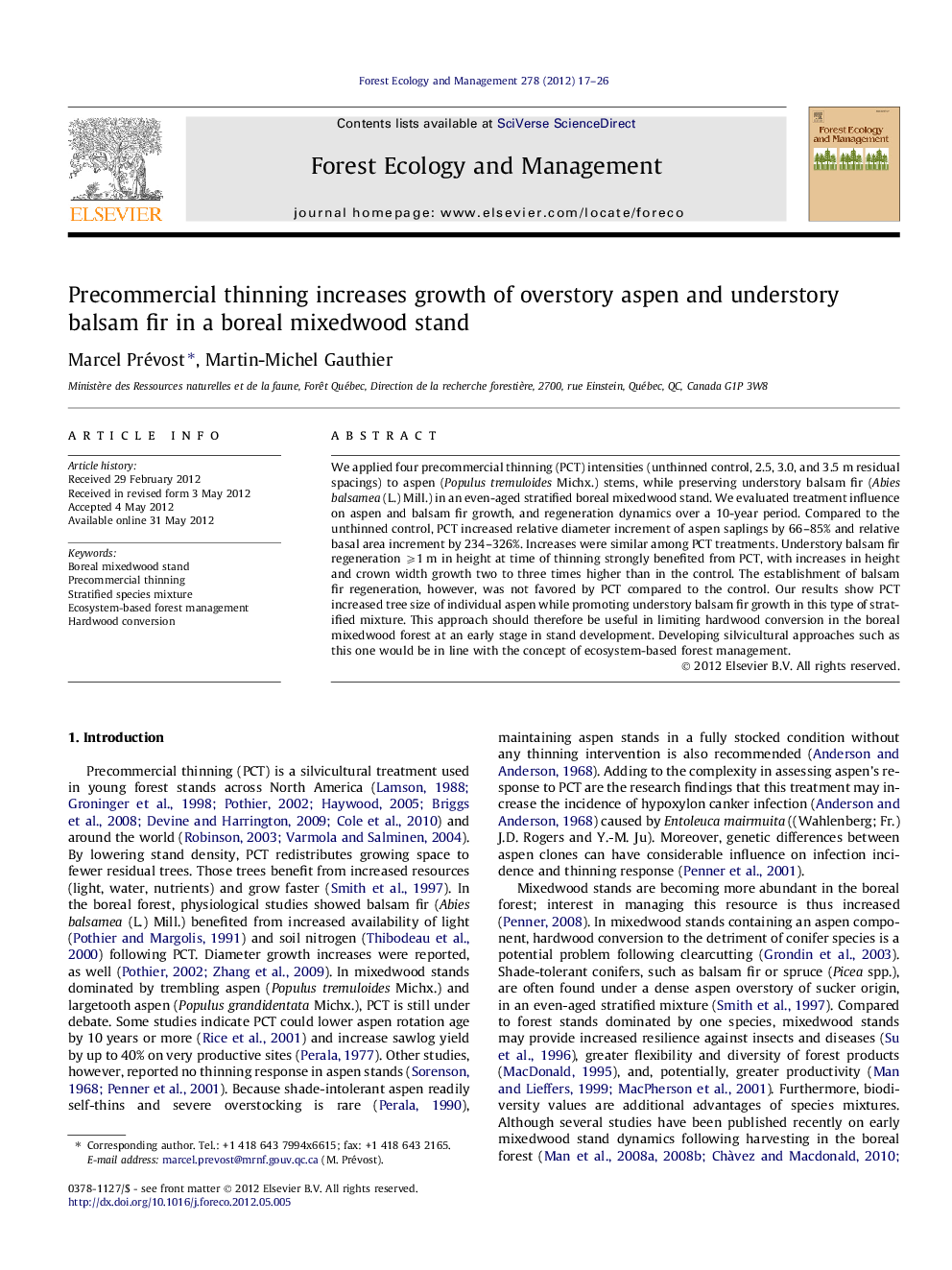| Article ID | Journal | Published Year | Pages | File Type |
|---|---|---|---|---|
| 87235 | Forest Ecology and Management | 2012 | 10 Pages |
We applied four precommercial thinning (PCT) intensities (unthinned control, 2.5, 3.0, and 3.5 m residual spacings) to aspen (Populus tremuloides Michx.) stems, while preserving understory balsam fir (Abies balsamea (L.) Mill.) in an even-aged stratified boreal mixedwood stand. We evaluated treatment influence on aspen and balsam fir growth, and regeneration dynamics over a 10-year period. Compared to the unthinned control, PCT increased relative diameter increment of aspen saplings by 66–85% and relative basal area increment by 234–326%. Increases were similar among PCT treatments. Understory balsam fir regeneration ⩾1 m in height at time of thinning strongly benefited from PCT, with increases in height and crown width growth two to three times higher than in the control. The establishment of balsam fir regeneration, however, was not favored by PCT compared to the control. Our results show PCT increased tree size of individual aspen while promoting understory balsam fir growth in this type of stratified mixture. This approach should therefore be useful in limiting hardwood conversion in the boreal mixedwood forest at an early stage in stand development. Developing silvicultural approaches such as this one would be in line with the concept of ecosystem-based forest management.
► We evaluated precommercial thinning in a stratified boreal mixedwood stand. ► Both trembling aspen and understory balsam fir were favored by the treatment. ► Aspen self-thinning was not enough to favor understory balsam fir growth. ► Thinning prevented hardwood conversion at an early stage in stand development. ► We present an ecosystem-based forest management approach.
